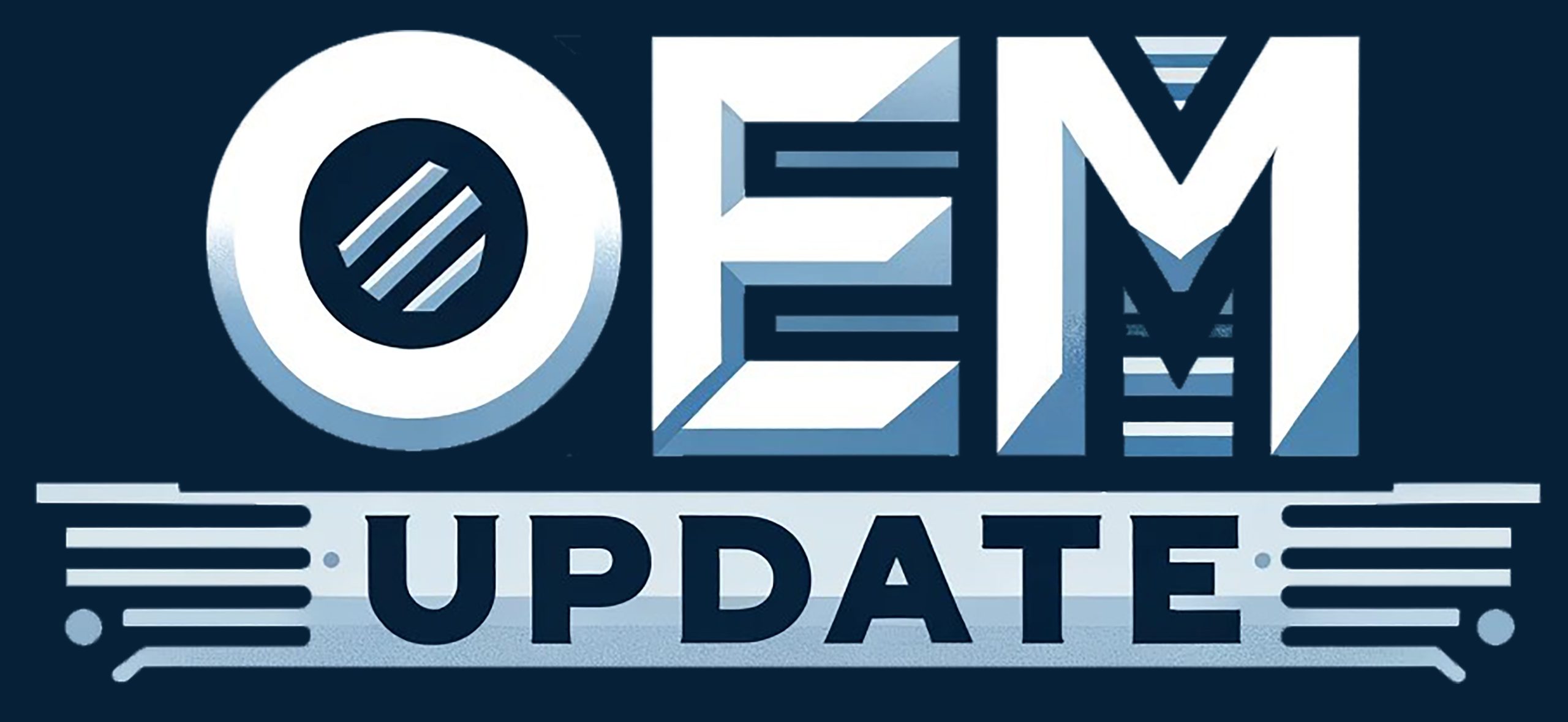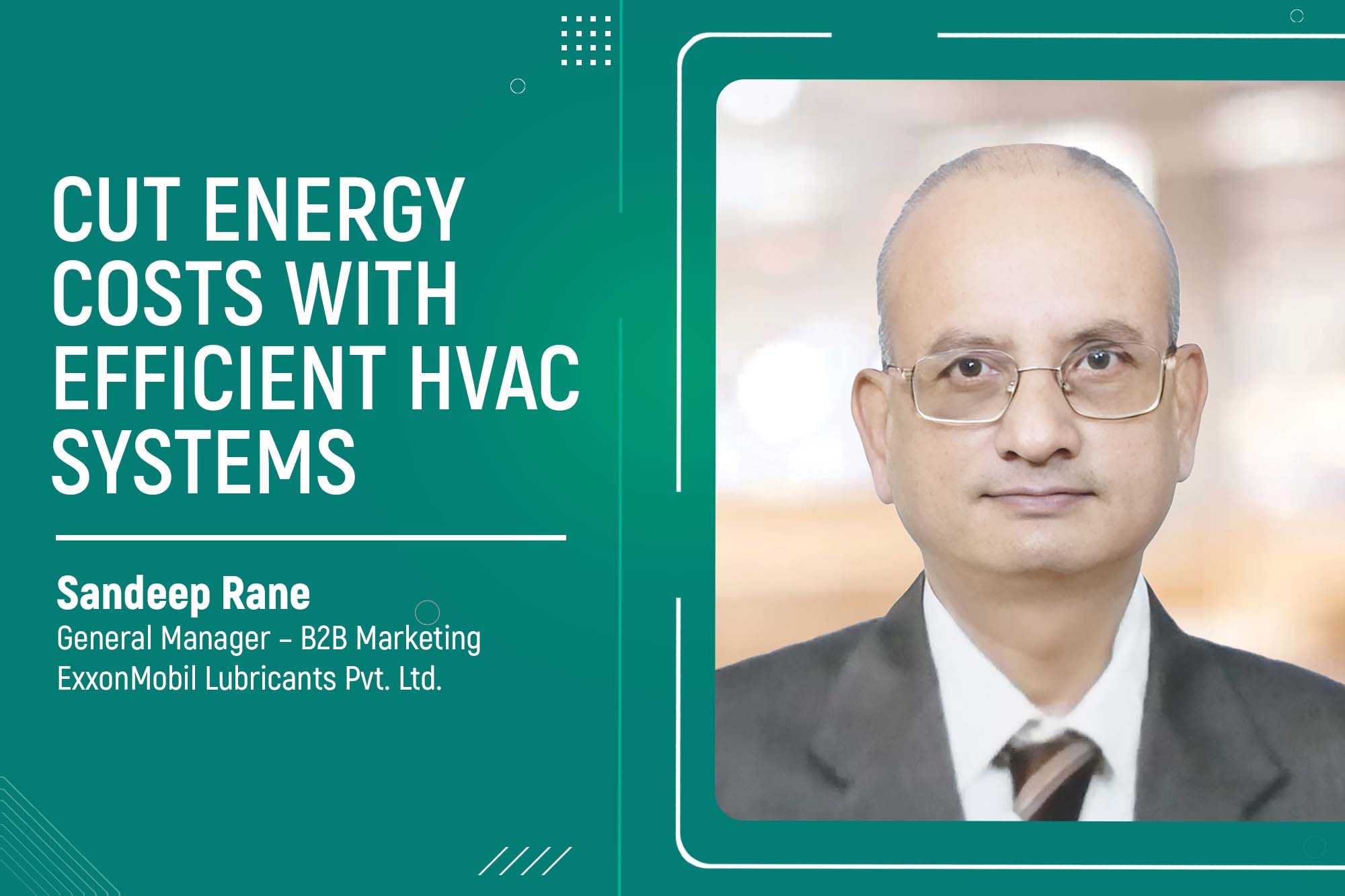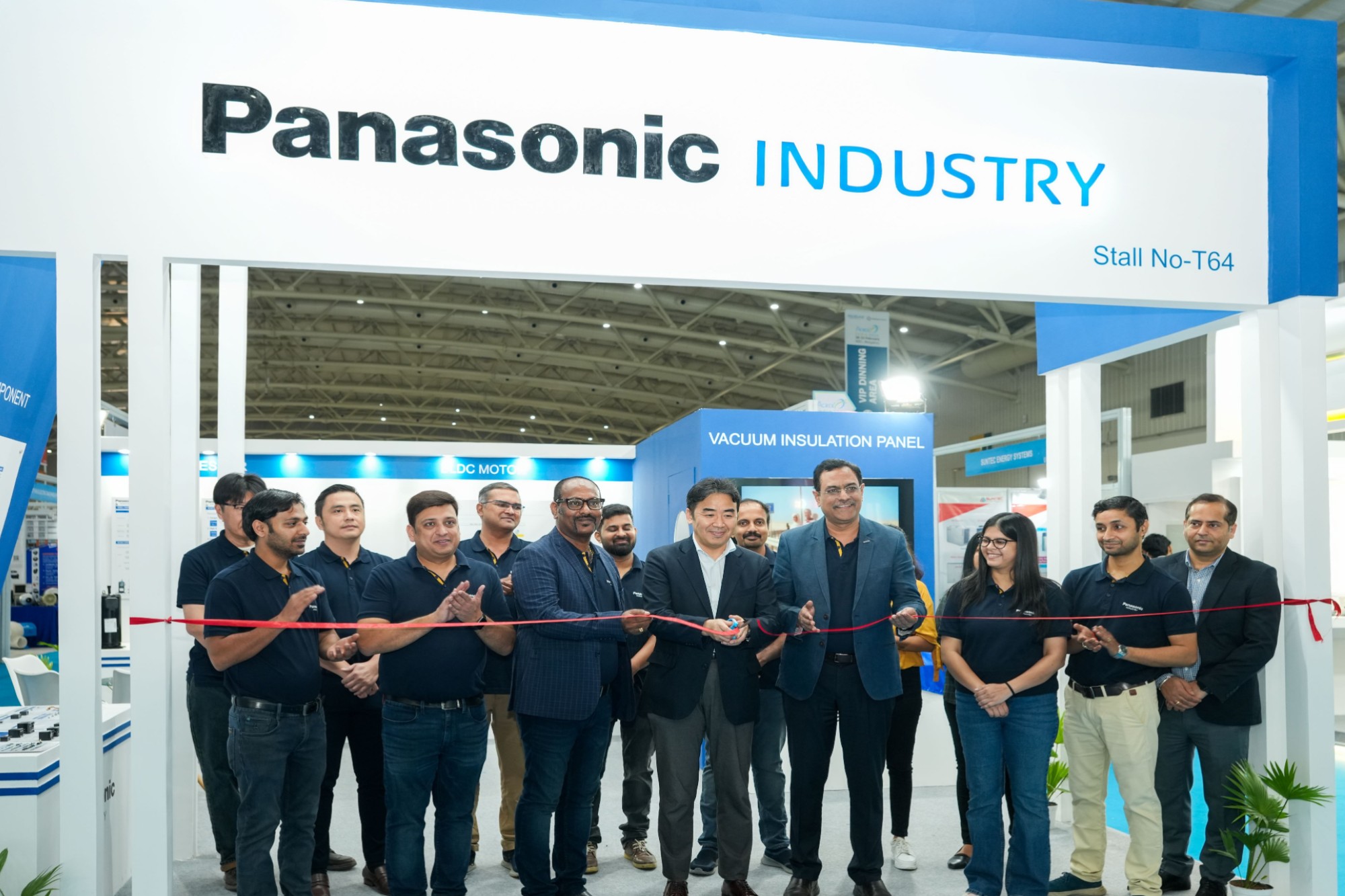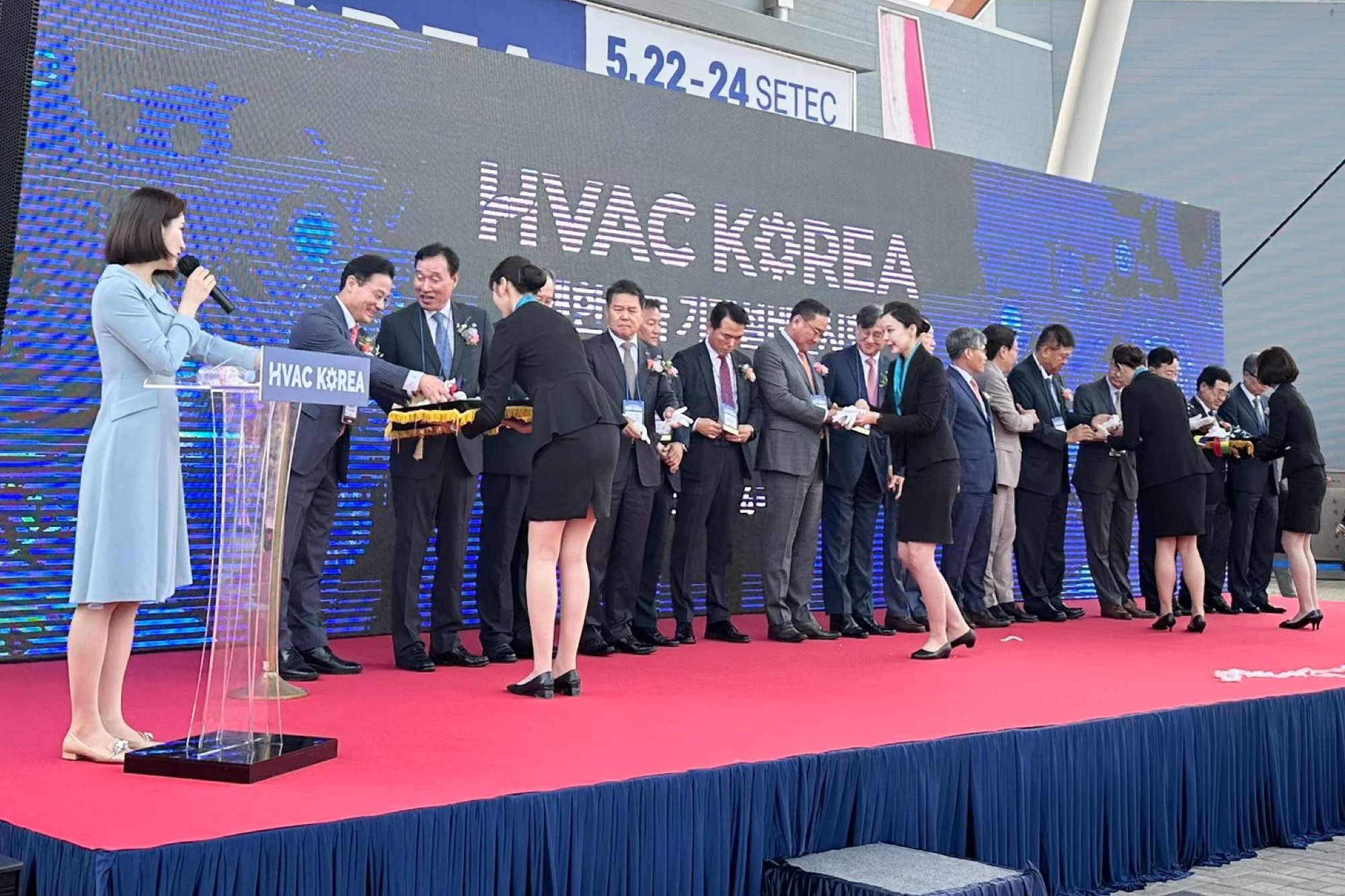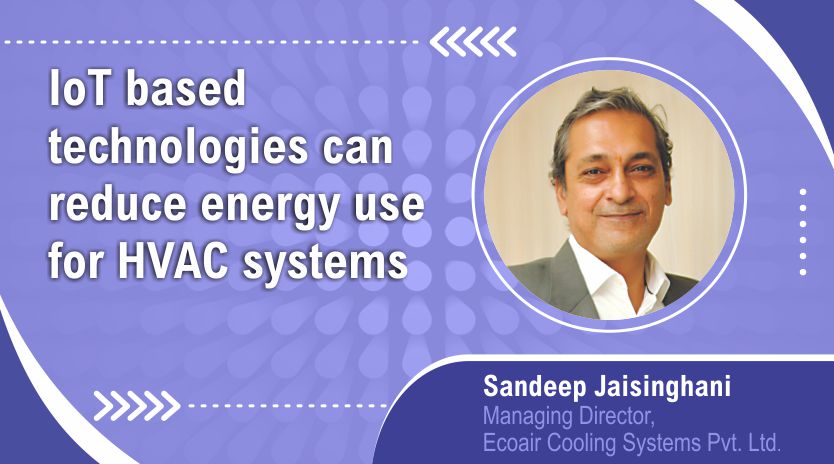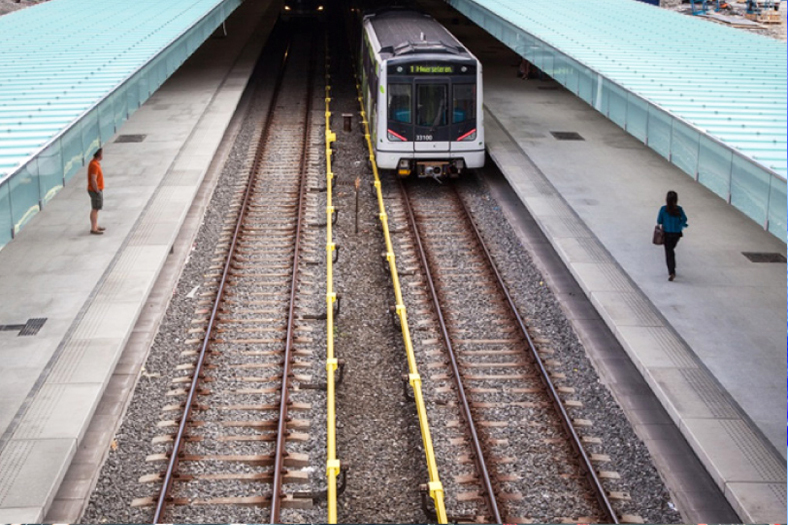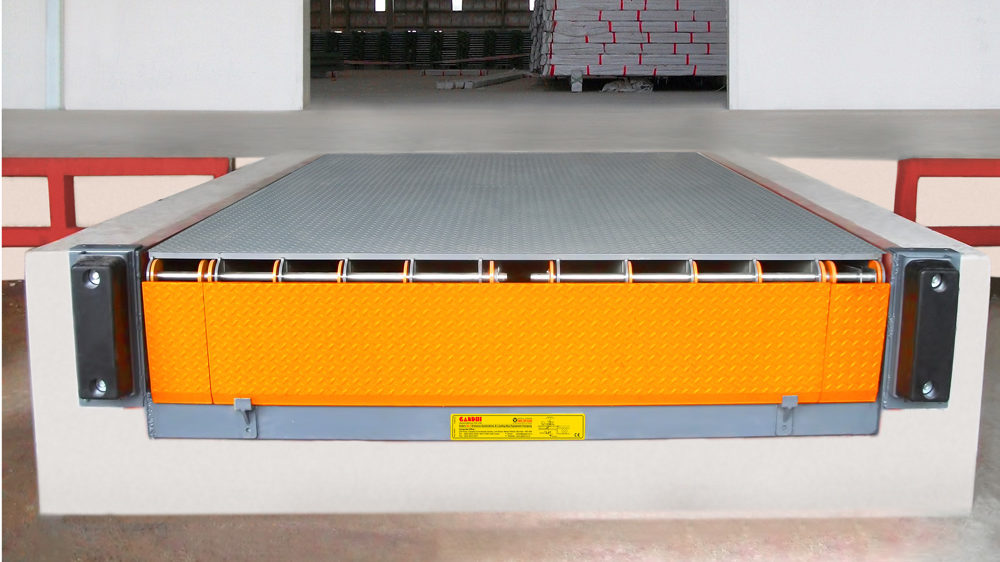Cut energy costs with efficient HVAC systems
By Staff Report February 11, 2025 6:14 pm IST
HVAC systems consume nearly 40% of electrical energy in commercial and industrial applications, making installing and running an energy-efficient system crucial. Sandeep Rane, Director of Sheetal Academy, shares the importance of energy efficiency in HVAC systems.
HVAC systems consume almost 40% of electrical energy in any commercial application and are also a major power consumer in industrial applications. Hence, it is essential to install and run an energy-efficient HVAC system. Planning starts at the project stage and continues through operation and maintenance. Selecting the proper equipment for the project is very important. The main equipment of any HVAC system is the chiller, AHU, pumps, and cooling tower (in the case of a water-cooled chiller).
Opting for chillers with flooded-type evaporators whenever possible is ideal. C.O.P. 5.6 TO 6.2 and electrical consumption of 0.57 kW/ton. At full load as per AHRI 550/590 (IP) and 551/591(SI). Standard rating condition of IPLV.IP as low as 0.34 KW/TON. Select chillers according to:
- Oil-free operation
- Chillers with inbuilt VSD (Variable Speed Drive). And 2-stage compressor design to achieve full load and part load performance.
- Always select the soft start module, which reduces current at start-up.
- Refrigerator-cooled compressors are covered under AHRI 550/590 and 551/591, and absorption chillers are covered under AHRI Standard 560.
Air-handling unit (AHU)
Always select a double-skin modular AHU with an insulation thickness of 25 mm to 50 mm, 40 kg/m3 density and thermal conductivity of K=0.07 w/moK.
I always choose new EC motors for AHU, followed by traditional belt-driven motors, new axial fans, and centrifugal fans. I check that AHU performance complies with industrial standards—AMCA 210 AHRI 430 (ASHRAE 51). Also, I prefer direct-drive fans to belt-driven fans and use Energy Star equipment.
Install the correct-sized air compressor for VSD, comply with ASHRAE 90.1 requirements, and use low-emissivity glass, specifically double-pane glass, as an insulator in building projects.
In operation and maintenanceConduct regular energy audits to manage energy consumption by collecting energy data for all HVAC equipment. There must also be a proper schedule for preventive and predictive maintenance.
A neglected or poorly maintained cooling tower can decrease a chiller’s efficiency by 10% to 35%. In the case of an air-cooled chiller, a dirty condenser coil will drop the chiller’s efficiency by 5% to 15%.
In a water-cooled condenser, a drop of 1 degree Fahrenheit in the cooling water temperature of the cooling tower can increase the chiller efficiency by 1% to 2 %. Proper annual chemical cleaning of the inside of the condenser and evaporator coil pipes can enhance heat transfer, resulting in a 5% to 15% energy saving -KW/TON.
Check for pipe insulation regularly and maintain proper chilled water pipe insulation. Worn-out insulation results in a loss of the chiller’s thermal efficiency. For the air Compressor, check for air leakages and a drop in pressure in ideal condition.
Regular inspection and maintaining the proper insulation of chilled water pipes is essential. The loss of thermal efficiency of a chiller can be attributed to worn-out insulation, and the air compressor is being checked for air leakages and pressure drops in optimal condition.
Cookie Consent
We use cookies to personalize your experience. By continuing to visit this website you agree to our Terms & Conditions, Privacy Policy and Cookie Policy.
